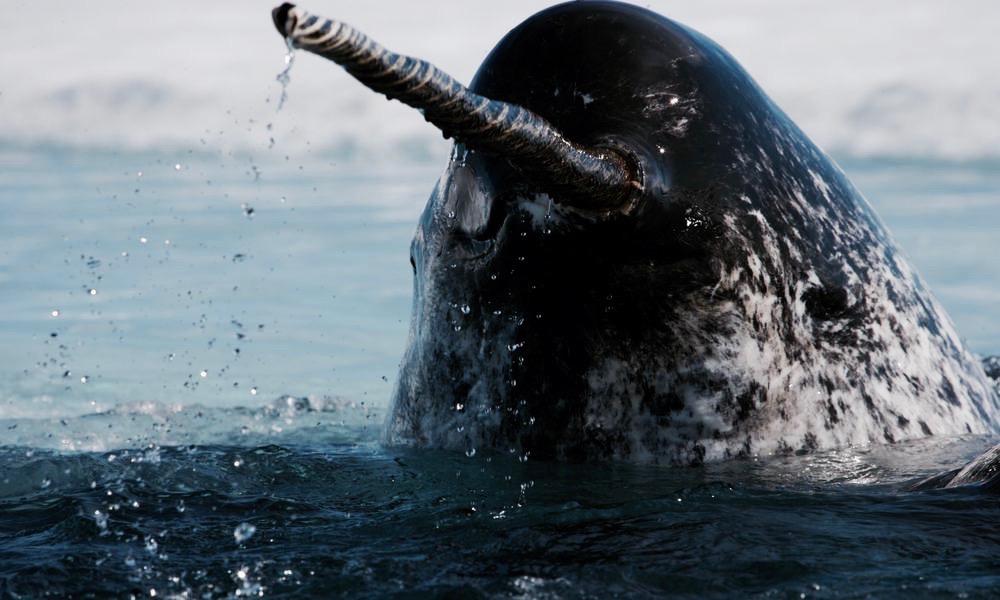
Its recovered bone was once sold as the horn from the unicorn. What was once thought to be a legend in the far past has been in modern times revealed to be the Narwhal. This whale with a long horn in the front of its head has been elusive, but thanks to new technology in the field, like drones, it has been procurable for more of an in depth study. The horn can grow up to nine feet long in front of the creature’s face. The bony protrusion is full of millions of nerves making it a sensitive yet sophisticated sensor. However, thanks to new research it has been discovered that the Narwhal uses it for other purposes.
Imagine swimming around and trying to eat fish, but those crafty critters seem to always get away. What if you had a big bat that could stun them with that left them disoriented so you could move right in and gobble them up whole? Based on new research and drone video that is exactly what the Narwhal does with its unicorn horn. As it swims through the ocean, it becomes the thug of the sea by batting prey over the head and devouring them.
Researchers investigate the creature in the remote Canadian Arctic by using nets to temporarily capture and study the Narwhal. Adam Ravetch, who is a wildlife filmmaker with Arctic Bear Productions states, “The Holy Grail for a wildlife cinematographer is to document animal behavior no one has seen before, and by doing so, contribute new knowledge.” Sea ice is essential to eat Narwhal’s ecosystem and survival. Without it, they lack a place to feed and hide from predators, thus since the Arctic is warming faster than the rest of the globe their icy habitat is being eroded. Thus, the ability to study these animals and contribute to new knowledge is quickly dwindling as the global temperature rises, and the Narwhal draws closer to becoming a bygone reality, a legend once again.
You may also like

Rocks Making Oxygen in Total Darkness

When Cheese Gets Interesting for Brain Health

What Happens If ACA Tax Credits End?

The Byheart Recall, Explained for Parents

What's Behind California's 2025 Crime Drop?
